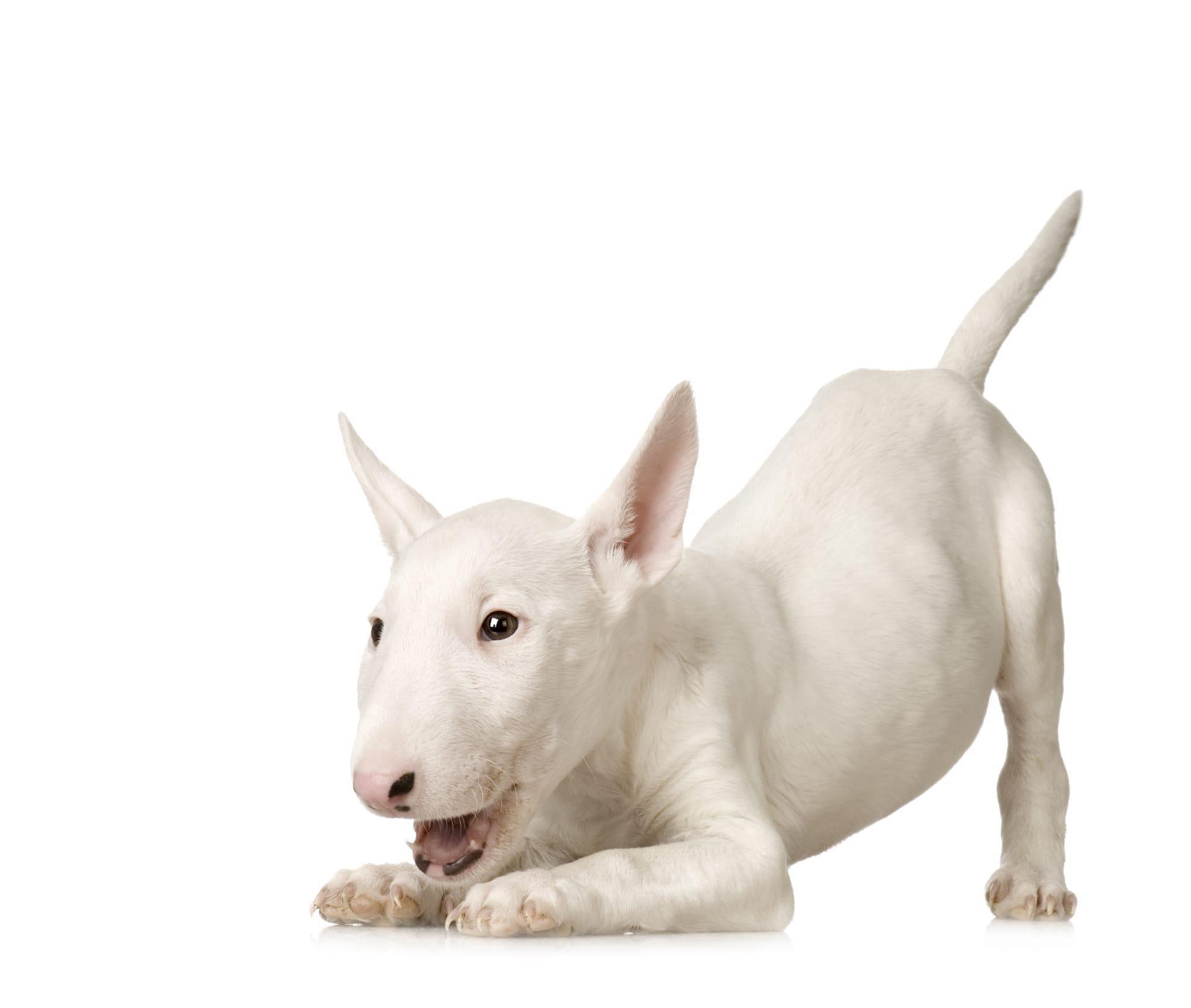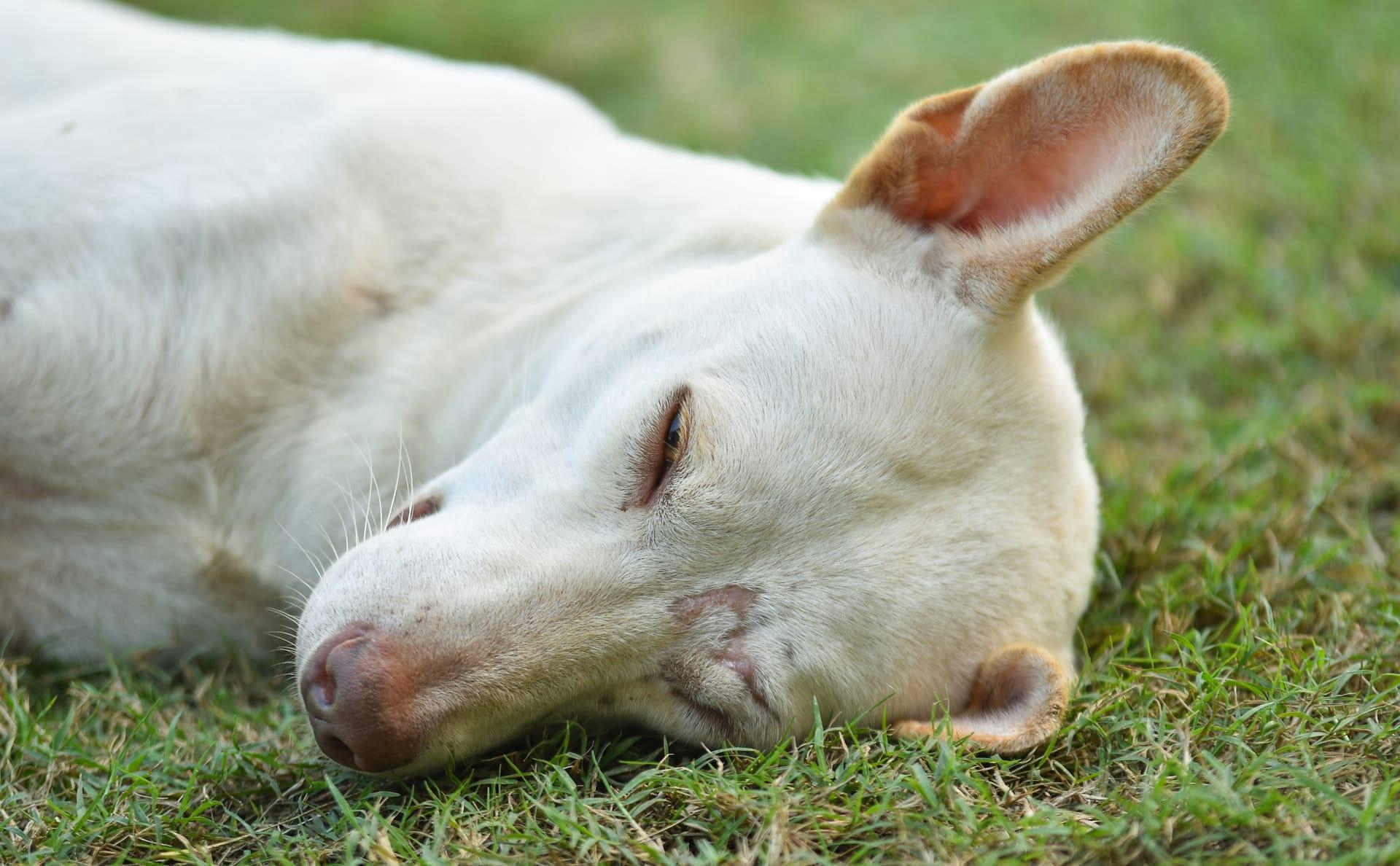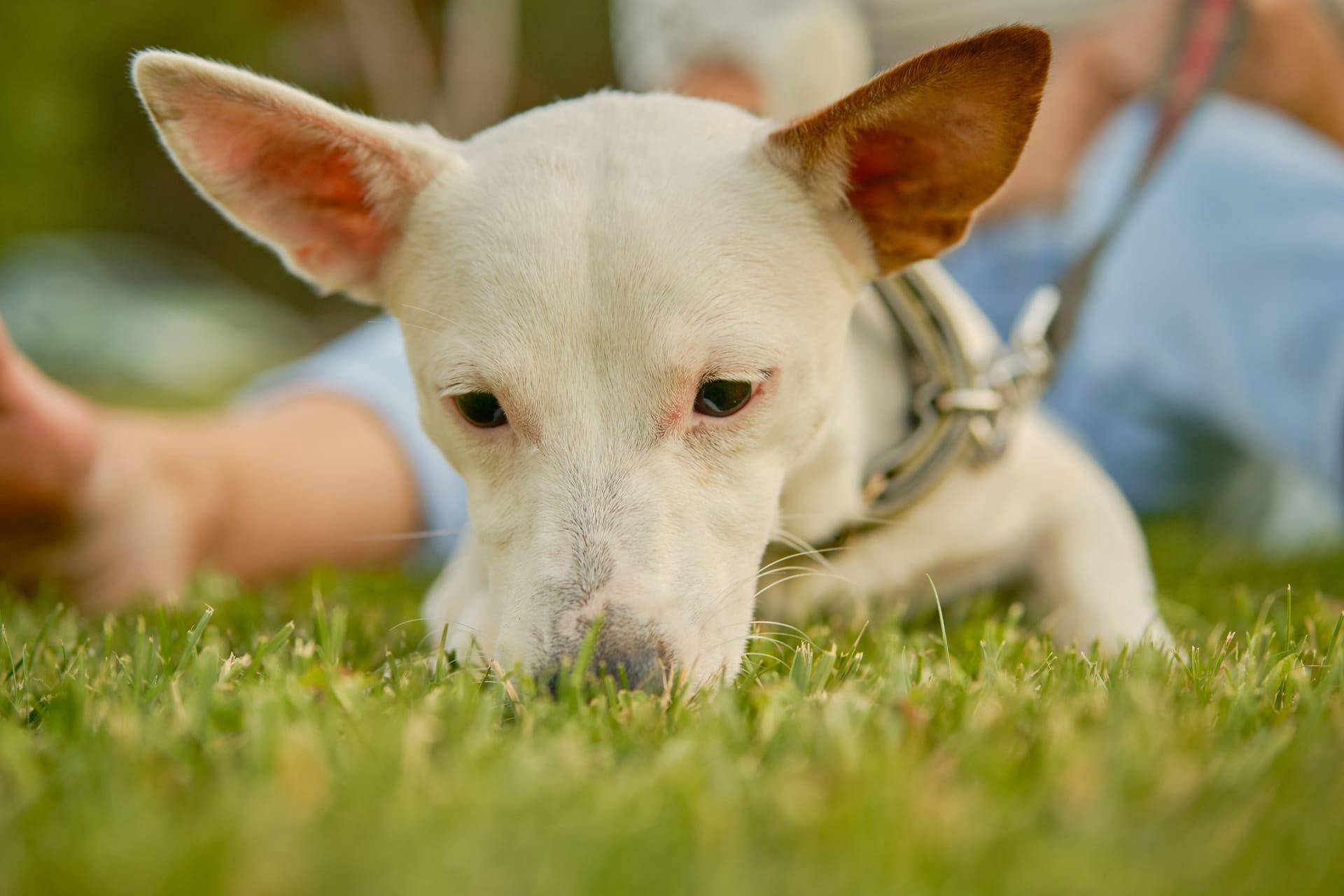1
Bull Terriers are known for their distinctive "egg-shaped" head, which is almost flat at the top and curves down to the nose with no stop. This unique shape is accompanied by small, triangular eyes that give them a keen, piercing look. The breed standard specifies the head's shape to be a key characteristic, setting them apart from other terrier breeds. This unique head shape has developed over years of selective breeding, aiming for a more streamlined and distinctive appearance.
Besides their unique appearance, Bull Terriers are also famous for their robust and muscular build. A male Bull Terrier typically weighs between 55 to 65 pounds (25 to 29 kg) and stands about 21 to 22 inches (53 to 56 cm) tall at the shoulder. Females are slightly smaller but equally sturdy. Their muscular physique contributes to their agility and strength, making them excellent competitors in dog sports such as agility, obedience, and even weight pulling competitions.

2
One fascinating aspect of Bull Terriers is their coat color variety. They come in a wide range of colors including white, brindle, fawn, red, black, and tri-color. The white Bull Terriers, often just referred to as "Bull Terriers," were the first to be recognized and shown, while the colored varieties, known as "Colored Bull Terriers," were later accepted. This diversity in coat color is a result of meticulous breeding practices and genetic diversity within the breed.
Bull Terriers have a notable place in popular culture, thanks in part to their distinct appearance and charismatic personalities. One of the most famous Bull Terriers is "Spuds Mackenzie," who was the mascot for Bud Light beer in the late 1980s. Another is "Bullseye," the mascot of the Target Corporation, who is recognized by the distinctive red paint around one eye. These appearances have contributed to the breed's popularity and public image, showcasing their versatility and adaptability in various roles.

3
The breed's history is rooted in 19th-century England, where they were originally bred for dog fighting, a now-outlawed sport. The Bull Terrier's ancestors include the old English Bulldog and the now-extinct White English Terrier. The goal was to create a breed that combined the strength of the bulldog with the agility and tenacity of the terrier. Despite their fighting origins, Bull Terriers have evolved into affectionate and playful companions, a testament to their adaptable and resilient nature.
Bull Terriers are known for their strong attachment to their families and often form close bonds with their owners. They are characterized by their loyalty and protectiveness, making them excellent family pets when properly socialized and trained. However, their strong personality means they require consistent and firm training from an early age. Their need for companionship and activity makes them less suitable for being left alone for long periods, as they can become bored and potentially destructive.

4
Health-wise, Bull Terriers are generally robust, but they can be prone to certain genetic conditions such as deafness, particularly in white Bull Terriers. This is attributed to the lack of pigment cells in the ear, which can affect hearing. Breeders often conduct BAER (Brainstem Auditory Evoked Response) tests on puppies to check for deafness. Another condition to watch for is heart disease, specifically aortic stenosis, which is a narrowing of the aorta and can affect the breed.
Interestingly, Bull Terriers have a unique trait known as "trancing." This behavior involves the dog slowly moving underneath objects such as bushes or curtains, appearing to be in a trance. While the exact reason for this behavior is unknown, it is harmless and quite amusing to observe. This quirky trait is not exclusive to Bull Terriers but is commonly reported among them, adding to the breed's distinctive and endearing personality.

5
Bull Terriers have a relatively high pain threshold, which can be a double-edged sword. On one hand, it contributed to their historical role in dog fighting, as they were less likely to back down from a fight. On the other hand, it means that Bull Terriers might not always show signs of injury or illness, making it crucial for owners to be vigilant about their health and well-being. Regular veterinary check-ups are essential to catch any issues early.
The breed's energy and intelligence make them well-suited for various canine sports and activities. Bull Terriers excel in disciplines such as agility, rally, and obedience training, where they can channel their energy and determination positively. These activities not only provide physical exercise but also mental stimulation, helping to keep these energetic dogs happy and balanced. It's a great way for owners to bond with their Bull Terriers and keep them engaged and well-behaved.